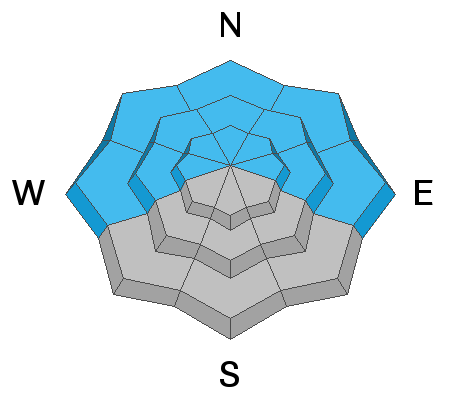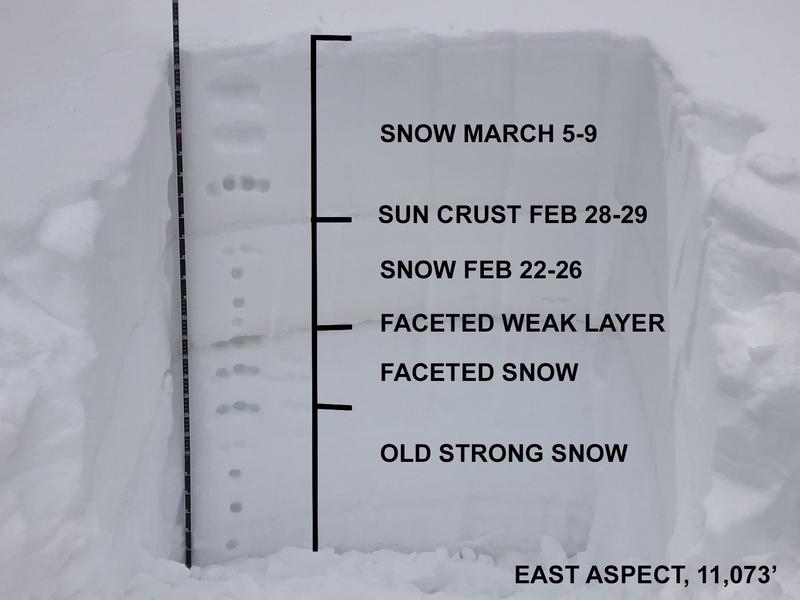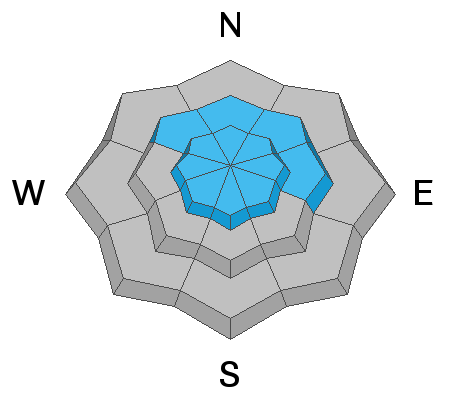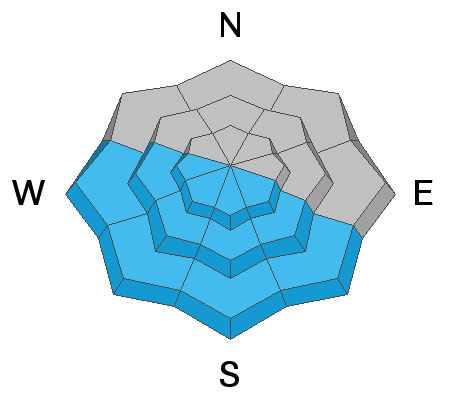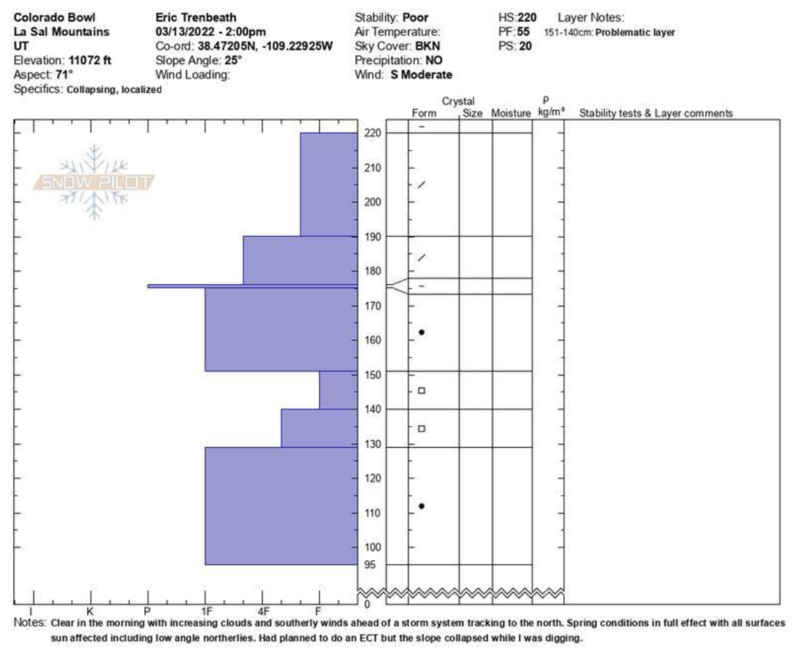Forecast for the Moab Area Mountains

Issued by Dave Garcia on
Tuesday morning, March 15, 2022
Tuesday morning, March 15, 2022
There is a CONSIDERABLE avalanche danger on steep slopes facing NW-N-NE-E and human triggered avalanches failing on a buried persistent weak layer 2-3 feet deep are likely. Keep your terrain choices conservative today. A MODERATE danger for triggering this type of avalanche exists on W facing slopes. Solar aspects will develop a MODERATE danger as the day heats up. Wet loose avalanches will be possible on sunny slopes.
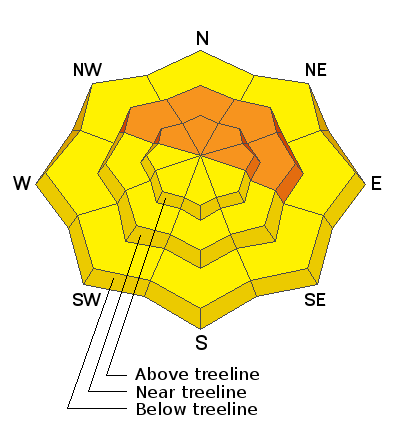
Low
Moderate
Considerable
High
Extreme
Learn how to read the forecast here


